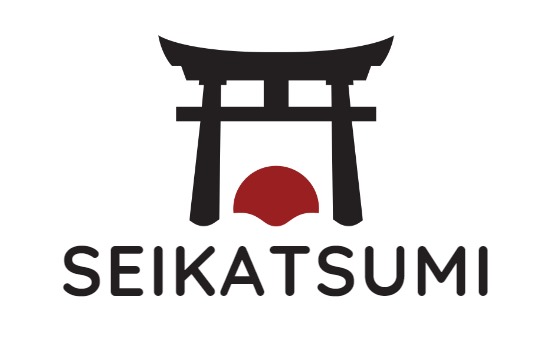Japanese food vending machines have become a staple in the country’s food culture, offering convenience and a wide range of options to hungry locals and tourists alike. These machines can be found in almost every corner of Japan, from busy streets to quiet neighborhoods, and offer a variety of hot and cold meals, snacks, and drinks.
The first vending machine in Japan was introduced in the late 19th century, and since then, they have evolved to become a unique aspect of Japanese culture. Japanese vending machines are known for their advanced technology, high-quality products, and convenient accessibility. They offer a wide range of food and drink options, from traditional Japanese dishes like ramen and sushi to international favorites like pizza and fried chicken.
With over 5 million vending machines scattered throughout the country, it’s no wonder that they have become a go-to option for quick and easy meals. Whether you’re in a hurry or just looking for a unique culinary experience, Japanese food vending machines are a must-try for anyone visiting Japan.

History of Japanese Food Vending Machines
Origins and Evolution
As we explore the history of Japanese food vending machines, we find that the first vending machine in Japan was a tobacco dispenser invented by Tawaraya Koshichi in 1888. However, it wasn’t until the 1960s that vending machines began to gain popularity in Japan. The convenience and variety of Japanese vending machines caught on, and by 1970, there were over a million vending machines across the country.
The evolution of vending machines in Japan has been fascinating. Initially, vending machines were used to sell cigarettes, but as the market for cigarettes declined, vending machines began to sell other items such as drinks, snacks, and even umbrellas. Today, vending machines in Japan are ubiquitous and can be found in almost every corner of the country.
Emergence of Vending Machines for Japanese Food
As we delve deeper into the history of Japanese food vending machines, we find that the first food vending machine was introduced in the 1960s. Initially, these vending machines sold only simple items like coffee and tea, but as the technology improved, the variety of items sold in vending machines increased.
Today, Japanese food vending machines offer a wide variety of food items ranging from hot meals to desserts. These machines are equipped with advanced technology, which ensures that the food items are always fresh and of high quality. The machines are also equipped with heating and cooling mechanisms, which ensure that the food items are served at the right temperature.
Types of Japanese Food Vending Machines

Japan is famous for its vending machines, and food vending machines are no exception. There are many types of food vending machines, each offering a unique experience. In this section, we will explore some of the most popular types of Japanese food vending machines.
Ramen Vending Machines
Ramen vending machines are a common sight in Japan. They offer a quick and convenient way to enjoy a hot bowl of ramen on the go. These machines typically offer a few different types of ramen, and you can customize your bowl with additional toppings such as egg, pork, and green onions. The machines dispense the noodles and broth separately, so you can add as much or as little broth as you like.
Sushi Vending Machines

Sushi vending machines are a relatively new addition to the Japanese vending machine scene. These machines offer a selection of pre-made sushi rolls, which are made fresh every day. You can choose from a variety of flavors, including tuna, salmon, and shrimp. The rolls are packaged in a clear plastic container, along with a packet of soy sauce and wasabi.
Snacks and Beverages
Snack and beverage vending machines are the most common type of vending machine in Japan. These machines offer a wide variety of snacks and drinks, including chips, candy, soda, and coffee. Many of these machines also offer hot and cold drinks, and some even allow you to customize the temperature of your drink.
Frozen Treats
Frozen treat vending machines are a great way to cool off on a hot day. These machines offer a variety of frozen treats, including ice cream, popsicles, and shaved ice. Some machines even offer unique flavors, such as green tea and red bean.
Regional Specialties
Many food vending machines in Japan offer regional specialties, such as local snacks and drinks. These machines are a great way to try new and unique flavors that you may not find elsewhere. For example, you may find a vending machine that offers a specialty soda that is only available in a certain region of Japan.
Cultural Impact

Japanese food vending machines have had a significant impact on Japanese culture over the years. Here are a few ways that these machines have influenced society:
Convenience Culture
Japanese food vending machines have become a symbol of convenience culture in Japan. With over 5.5 million vending machines in the country, there is one for every 23 people, making them ubiquitous and almost impossible to avoid. They are a testament to the Japanese culture of efficiency and convenience.
Influence on Dining Habits
Vending machines have also influenced Japanese dining habits. They provide quick and easy access to food and drinks, making it possible for people to grab a meal or snack on the go. This has led to a culture of eating on the run, with many people opting for vending machine meals rather than sitting down for a traditional meal.
Acceptance and Popularity in Society
Japanese food vending machines have become an accepted and popular part of Japanese society. They are found in almost every corner of the country, from busy city streets to remote mountain villages. They offer a wide variety of food and drinks, from traditional Japanese dishes to international cuisine, and are a convenient and affordable option for many people.
Innovation in Japanese food culture
Japanese food vending machines have also contributed to the innovation of Japanese food culture. Vending machines offer a unique way to deliver food and drinks, and many companies have taken advantage of this to create new and innovative products. For example, some vending machines offer freshly brewed coffee, while others offer hot and cold meals that are ready to eat.
The Proliferation of Japanese Food Vending Machines

Japanese food vending machines are ubiquitous in Japan, and their popularity is growing rapidly worldwide. These machines offer a wide variety of food and drink options, from hot and cold beverages to snacks, sandwiches, and even full meals. In this section, we will explore the proliferation of Japanese food vending machines, including their urban and rural presence in Japan and popular locations for installation.
Urban and rural presence in Japan
Japanese vending machines can be found everywhere in the country, from busy city centers to remote rural areas. According to Nikkei Asia, there are approximately 5.5 million vending machines in Japan, which means there is one vending machine for every 24 people. These machines are so prevalent that they have become a part of daily life for many Japanese people.
Popular locations for vending machines
Japanese vending machines are found in a wide variety of locations. Some of the most popular locations include train stations, shopping centers, and convenience stores. They are also found in public parks, on the streets, and even on the tops of mountains. In rural areas, vending machines are often installed in front of small shops or on the sides of roads, providing a convenient source of food and drink for people who live far from larger towns and cities.
Challenges and Criticisms
Environmental impact of packaging
One of the main criticisms of Japanese food vending machines is the environmental impact of packaging. Most food items are packaged in plastic or paper containers, which contributes to the growing problem of plastic waste. While some vending machines have introduced biodegradable containers, this is not yet the norm. As consumers, we can try to reduce our environmental impact by bringing our own reusable containers or opting for food items that have minimal packaging.
Concerns regarding freshness and quality
Another challenge faced by Japanese food vending machines is concerns regarding freshness and quality. Some consumers worry that the food items may not be fresh or may have been sitting in the vending machine for too long. While vending machines are equipped with technology that freezes every meal to -25°C and automatically stops selling ones that have passed their best-before date, some consumers may still have concerns. As consumers, we can try to choose food items that have a shorter shelf life or that are popular and frequently restocked.
Technical issues and maintenance

Finally, Japanese food vending machines may suffer from technical issues and maintenance problems. While vending machines are generally reliable, they may sometimes malfunction or require maintenance. This can result in lost sales and frustrated customers. As vending machine operators, we can try to minimize downtime by conducting regular maintenance and addressing issues promptly. As consumers, we can try to be patient and understanding when vending machines are out of service or experiencing technical difficulties.
Future Trends
Here are some possible future trends for Japanese food vending machines.
Innovations in Vending Machine Technology

As technology continues to advance, we can expect to see more innovative features in Japanese food vending machines. For example, some vending machines already use facial recognition technology to recommend food items based on the customer’s age and gender. In the future, we may see machines that can recommend food based on the customer’s health data or dietary restrictions.
Another potential innovation is the use of augmented reality (AR) to enhance the customer experience. For example, a customer could use their smartphone to scan a code on the vending machine and see a virtual image of the food item, along with information about its ingredients, nutritional value, and cooking instructions.
Potential expansions of offerings

Currently, Japanese food vending machines offer a wide range of items, from hot meals to snacks and drinks. However, there is still room for expansion in terms of the types of food offered.
One potential area for expansion is vegetarian and vegan options. While some vending machines already offer vegetarian and vegan meals, there is still a relatively limited selection compared to non-vegetarian options. As more people adopt plant-based diets, we may see an increase in demand for vegan and vegetarian vending machine options.
Another area for expansion is regional cuisine. While some vending machines already offer regional specialties such as ramen and udon, there is still room for more variety. By offering a wider range of regional cuisine, vending machines could help promote and preserve Japan’s culinary culture.
Impacts on Japanese culinary culture

As vending machines continue to evolve and expand their offerings, they may have an impact on Japanese culinary culture. For example, by offering a wider range of regional cuisine, vending machines could help promote lesser-known dishes and ingredients from different parts of Japan.
Additionally, vending machines could help make Japanese cuisine more accessible to tourists and foreigners. By offering clear and concise information about the food items, including ingredients and nutritional value, vending machines could help demystify Japanese cuisine and make it more approachable for those who may not be familiar with it.
Tourist Attraction and Novelty

When it comes to Japanese vending machines, they are not just a convenient way to grab a quick snack or drink. They are also a unique and fascinating aspect of Japanese culture that has become a tourist attraction in its own right.
Themed Vending Machines

One of the reasons why Japanese vending machines are so popular is because of their variety and novelty. Some vending machines are themed around popular anime characters, while others dispense rare and exotic drinks that cannot be found anywhere else. For example, there are vending machines that sell hot soup, beer, sake, and even sake-flavored Kit Kats!
Vending Machine Tourism

In recent years, vending machine tourism has become a popular trend in Japan. The city of Sagamihara, in particular, has become a mecca for vending machine enthusiasts. According to CNN Travel, there are over 100 vending machines located in the city, offering a wide range of products from hot meals to vintage soda cans.
Visitors can take a vending machine tour of Sagamihara, which includes stops at some of the most unique and interesting vending machines in the city. Some of the most popular vending machines include those that sell hot noodles, fresh eggs, and even live crabs!
Frequently Asked Questions
What types of food are available in Japanese food vending machines?
Japanese vending machines offer a variety of options, including ramen, sushi, bento, snacks, drinks, and desserts.
How do Japanese food vending machines work?
You choose your item, pay with cash or digital methods, and the machine dispenses your order. They’re user-friendly and often have English instructions.
Are Japanese food vending machines safe and hygienic?
Yes, they’re safe and hygienic, meeting strict food safety regulations, and regularly maintained for freshness. Always check cleanliness and expiry dates.
If you liked this blog article about Japanese Food Vending Machines, don’t forget to follow us on Pinterest so you don’t miss any more food tips.
Let us know, which of the above ist your absolute favorite Vending machine!





I like this website because so much useful stuff on here : D.